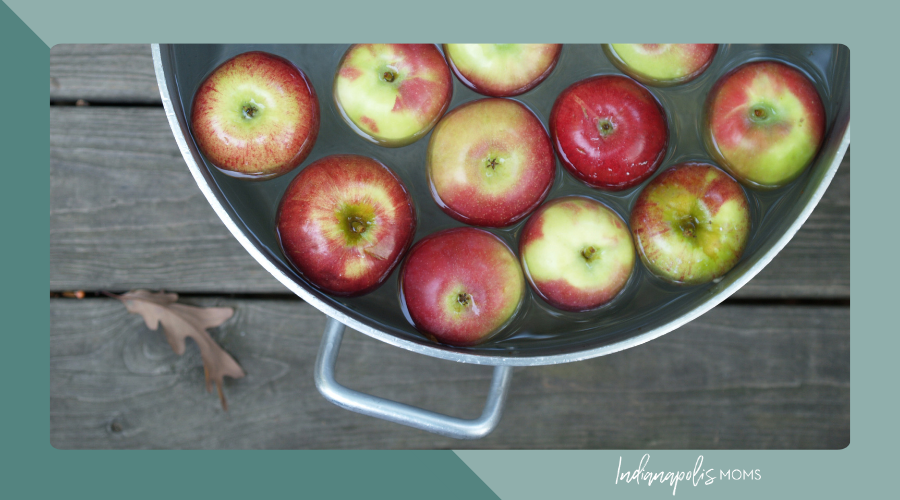 Growing up, Halloween was one of my favorite holidays. I grew up in Ireland in the 1980s and 1990s, and back then, I was oblivious to the history of Halloween and how it began in Ireland. Long before trick-or-treating or pumpkin carving reached the good old USA, this ancient Celtic festival marked the turning of the seasons and the moment when the veil between the living and the dead was said to grow thin.
Growing up, Halloween was one of my favorite holidays. I grew up in Ireland in the 1980s and 1990s, and back then, I was oblivious to the history of Halloween and how it began in Ireland. Long before trick-or-treating or pumpkin carving reached the good old USA, this ancient Celtic festival marked the turning of the seasons and the moment when the veil between the living and the dead was said to grow thin.
Over two thousand years ago, the Celts celebrated Samhain (pronounced Sow-in), a pagan festival marking the end of the harvest and the beginning of the dark half of the year. It fell on October 31st, which was the halfway point between the autumn equinox and the winter solstice.
For the Celts, this was a time of transition. The crops were gathered, the livestock brought in, and preparations made for the long winter. But it was also a mystical time when spirits were believed to cross from the Otherworld into ours. Fires were lit on hilltops across Ireland to ward off evil and honor the dead. Communities gathered for feasting, storytelling, and rituals to protect their homes and families from wandering spirits.
By the time I was age-ready to go trick-or-treating, Ireland still maintained some of the ancient traditions, intertwined with newer traditions, mostly taken from American movies.
From Turnips to Pumpkins
Long before the bright orange (and very carve-able) pumpkin became the symbol of Halloween, Irish people carved grotesque faces into turnips and placed candles inside them. These jack-o’-lanterns were meant to frighten away the spirit of “Stingy Jack,” a trickster who, according to folklore, had fooled the devil but was doomed to wander the earth with only a burning coal inside a hollowed-out turnip to light his way.
When Irish immigrants brought their traditions to America in the 19th century, they discovered that pumpkins were larger, softer, and much easier to carve. Hence, the American Halloween pumpkin was born.
In the 1980s and 1990s, pumpkins still hadn’t made their way to our small island, and thus, we still carved turnips. I have strong memories of my poor father fighting for hours to carve one small turnip – I’m talking bent silverware, many profanities, and a very frustrated and exhausted dad. They certainly were not as ideal as a pumpkin for this reason, and the smell of over-cooked turnip would fill the streets as we trick-or-treated around all the different neighborhoods.
Food, Future Fortune, and Games
Irish Halloween customs were rich with games and foods meant to tell the future, especially in matters of love and marriage. One of these games was called ‘Bobbing for Apples’. In ‘Bobbing for Apples’, a large pot of water with floating apples was placed in front of a line of children. Each child took a turn to ‘bob’ for an apple with their hands behind their backs and using only their mouths. In these post-COVID times, I can’t imagine this germ-filled tradition being acceptable, but back in the 90s, this is what we did!
Another tradition was placing items inside an apple pie. Apple pies and fruit breads were traditionally made at Halloween. However, the superstitious Irish mammies and grannies hid items inside the pies and bread to tell the fortune of those eating; a ring foretold marriage, a coin promised wealth, a piece of cloth signaled misfortune, and a stick hinted at disputes or a wandering life.
The Masks and the Spirits
The Celtic belief that spirits roamed freely on Samhain night gave rise to the custom of disguising oneself. People would wear masks or dress in ragged clothes to confuse or appease wandering ghosts. This practice evolved into guiding, going door to door in costume, often reciting verses or performing tricks in exchange for food or coins. When Irish immigrants brought these customs to North America, guising eventually evolved into the trick-or-treating we know today.
Just like in the USA, we also dressed up as witches or ghosts, typically using flammable black trash bags as outerwear, decorated with some stars made from aluminum foil and cardboard. Trick-or-treating consisted of knocking on the door and singing a tune to be rewarded with coins or a handful of whole peanuts, also known as ‘monkey nuts’.
Fireworks and Festivities
Modern Halloween in Ireland is a lively affair. Towns and cities host parades, fireworks, and spooky-themed events that attract locals and tourists alike. The City of Derry, in Northern Ireland, has become one of the largest Halloween celebrations in Europe, drawing thousands of visitors each year. The city’s medieval walls and riverfront provide the perfect backdrop for ghostly processions, light shows, and street performances.
Storytelling is central to Halloween, and families will gather to tell ghost stories. Ireland has no shortage of them. Tales of banshees, headless horsemen, and haunted castles continue to thrill each new generation.
The Spirit of the Season
Halloween in Ireland isn’t just about costumes and candy; it’s about connection to the land, to history, and to those who came before. They remind us that Halloween is not merely a night of fear, but a celebration of memory, mischief, and mystery, born from Irish soil and carried around the world.








